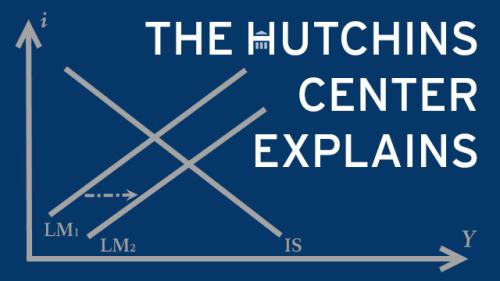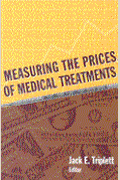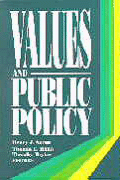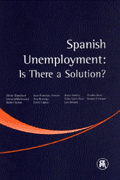Studies in this week’s Hutchins Roundup find that the Phillips Curve is still active but masked by monetary policy, strong U.S. investment post TCJA largely driven by expected increases in aggregate demand, not supply, and more.
Want to receive the Hutchins Roundup as an email? Sign up here to get it in your inbox every Thursday.
The Phillips Curve is still active but masked by monetary policy
The Phillips Curve, the negative relationship between the unemployment rate and inflation, has been difficult to identify in recent years as unemployment has been low but inflation has failed to take off. Michael McLeavy and Silvana Tenreyro from the Bank of England suggest that the Phillips Curve relationship is simply being masked by effective monetary policy. Using simulations of a theoretical model, they show that when monetary policy acts to offset shocks to the economy that could generate inflation, it appears as if the Phillips Curve relationship is weak or nonexistent. In other words, a strong economy still generates inflation, but the Federal Reserve acts preemptively to raise interest rates before inflation actually occurs. Using data on employment and prices across 28 US metropolitan areas from 1990 to 2017, effectively holding monetary policy constant, they show that inflation falls when unemployment rises and the Phillips Curve is still active. The authors suggest that monetary policy that doesn’t react to low unemployment therefore could still result in high inflation.
Strong U.S. investment post TCJA largely driven by expected increases in aggregate demand, not supply
Proponents of the 2017 Tax Cuts and Jobs Act (TCJA) argued that the TCJA’s business tax cuts would lead to increased investment and economic growth. Using forecasts from the IMF’s World Economic Outlook, Emanuel Kopp of the IMF and colleagues find that the higher-than-expected U.S. business investment since 2017 was mostly driven by expectations of strong aggregate demand arising from increases in government spending and the TCJA’s individual income tax cuts, rather than supply-side factors like reductions in the cost of capital. Had business investment responded to the TCJA as much as to other postwar U.S. tax cuts, investment would have increased 5.2 percentage points as a result of the tax cuts, instead of the actual increase of just 3.5 percentage points, they say. Using firm-level investment and employment data for 17 advanced economies, they find evidence suggesting that relatively weak investment response to tax policy today may largely reflect increased corporate market power.
Standard unemployment statistics overstated labor market tightness at end of 2018
Unemployment statistics suggest that the labor market is relatively tight, but there has been a lack of upward pressure on wages and prices. Katharine Abraham and John Haltiwanger of the University of Maryland suggest that one reason for this discrepancy may be that the unemployment rate doesn’t fully capture the state of the labor market. The authors propose a new measure of labor market tightness that accounts both for the variation in the availability of potential new hires, drawn not only from the unemployed but also from those currently out of the labor force or already working, and for variation in the effort employers exert in recruiting new employees. Examining CPS microdata with their proposed measure, the authors find that the U.S. labor market was considerably less tight at the end of 2018 than what is implied by standard unemployment statistics. Although unemployment statistics are informative, “the unemployment rate and the unemployment gap are not sufficient statistics for assessing the state of the labor market,” they conclude.
Chart of the week: Benefits of a bachelor’s degree still exceed costs
*The chart below plots the rate of return for a bachelor’s degree since 1970. Over the past several years, this return appears to have declined slightly, but remains positive.

Quote of the week:
“[T]ariffs have a number of impacts on the economy. First, they push up prices. So, in that way, there’s an increase in the price level. Typically, that is not inflationary, it is a one-time increase in the price level. Secondly, they potentially impact supply chains. And if they persist and if those impacts are large, that could have some impacts on productivity as well. I think what I can say is today, the tariffs that have been put in place on the economy have had a small effect in the aggregate and I think the others would agree with that consensus,” says Richard Clarida, Vice Chair of the Federal Reserve.
“As we move ahead and consider potentially more tariffs and potentially retaliation, that potentially has a more noticeable effect on the economy and we would have to take that into account. […] so far, I think we’re confident in saying so far the tariffs in place have had a small impact, if at all, on growth. […] I think that we will confront [higher tariffs] when we get to it. But I think the way that I think about it…as one member of the committee is I think textbook macro would indicate that you would tend to look through the price level effect because it is not really telling you about long run inflation. And I think that that would be my first instinct which would be to look through that on the price level.”










Commentary
Hutchins Roundup: Phillips Curve, TCJA and investment, and more
June 6, 2019
Studies in this week’s Hutchins Roundup find that the Phillips Curve is still active but masked by monetary policy, strong U.S. investment post TCJA largely driven by expected increases in aggregate demand, not supply, and more.